The Mclean Group
-
- Middle Market Mergers and Acquisitions: A Primer Maritime Logistics Professional, Q1 2015 #10
Over the past few years, we have provided regular analysis of the maritime and offshore industry mergers and acquisitions (M&A) markets. But what goes into those decisions and transactions? This quarter, an overview of the basics of mergers and acquisitions – the players, the process and the terminology – will simplify the language of M&A.
Buyers
In simple terms, there are really two types of buyers in the M&A world: Financial Buyers and Strategic Buyers. A ‘strategic’ is generally a larger company with operations that are similar to those of the ‘target’ company, and the acquisition is intended to capitalize on the synergies between the two entities. The prototypical financial buyer is a private equity group, which is likely to buy and hold the target for some period of time before pursuing another sale or IPO.
Strategic buyers tend to employ internal ‘corporate development’ staff members to seek out, evaluate and execute transactions. Acquisitions are funded both through cash on hand as well as credit lines and other debt instruments, and publicly-traded companies have the additional advantage of offering company shares as transaction currency. Two examples of prolific public company acquirers in the maritime and offshore industries are Kirby Corporation (NYSE: KEX), and more recently Teledyne Technologies (NYSE: TDY). Kirby made a number of strategic acquisitions in the liquid tug and barge transport market, particularly between 2010 and 2012, while Teledyne has added a number of strategic subsea technology holdings since 2013 including Bowtech and Bolt Technology.
Financial buyers come in many different forms, but the most common type is called a “Private Equity Group.” PE groups are formally established investment firms with a full-time staff and committed capital from several investors, with a mandate to seek out and acquire companies. Most often, a private equity group will acquire “platform” companies, followed by smaller “add-on” acquisitions of companies that complement the platform. After a period of time, perhaps five years or so, the fund will pursue a follow-on transaction with the (hopefully) larger and more profitable portfolio company. This transaction will return capital and profits to the fund and its investors and may be in the form of a fully company sale, a recapitalization through borrowing against profits, or in rare cases, an initial public offering (IPO) on a stock exchange.
Private equity investors have proliferated in the past couple of decades and there are now thousands of firms in the U.S. which vary widely in terms of fund size, staffing and formal commitment of capital. According to the private equity database provider PitchBook, there are more than 17,000 formally-established private buyout and venture funds in the United States – this doesn’t include thousands of “angel” investors and small, highly-focused acquisition funds.
Sellers
For every buyer in an M&A transaction, there must be a seller. Companies enter the M&A market from a number of ownership structures including closely held family businesses, divisions and subsidiaries of larger companies, and of course from the portfolios of private equity firms. Perhaps even more diverse than types of sellers in the market is the variety of motivations and goals of owners entering into M&A transactions.
Owners of smaller, closely-held companies will often contemplate a transaction for many years prior to reaching a decision to pursue a transaction, but very few actually develop a formal transition plan for their company. This dynamic is often a result of the same entrepreneurial qualities that made the owner successful in the first place: he or she is too consumed with managing a successful business every day, and may not be too biased toward giving up control to others. Sometimes owners are pushed toward a transaction process due to outside forces, such as health issues, divorce or lack of a clear successor when retirement becomes imminent.
Larger corporate and financial sellers tend to be more calculating in their decisions to go to market with a business entity. Corporations may divest subsidiaries and divisions that no longer fit within their strategic plan, and the capital raised in a sale process can be redeployed for a higher long-term return. In the case of private equity sellers, the impetus to go to market is ideally driven by the fund’s investment goals and desired holding period, though outside market forces may sometimes dictate the timing of a sale. Alternatively, in an economic climate such as today with favorable debt terms, owners of cash-flowing companies may prefer to recapitalize rather than sell outright, thus taking cash “out” of the business and shifting some risk to one or more lenders.
The M&A Process
Regardless of the type of business ownership, most sophisticated sellers in the middle market will seek out knowledgeable advisors to help guide them through the long and challenging M&A process. Investment banks provide services to owners, from evaluating the company’s market value to laying out exit options and running a full M&A “auction,” which despite the name is typically a tightly-controlled and confidential market process with a targeted list of potential buyers. For companies that aren’t quite suited for the large, recognizable wall street firms, there are many smaller “lower middle market” investment banks in the U.S. that tend to have strong experience in certain market niches. The lower middle market has many definitions, but a common range might include businesses with market values of around $10 million to $200 million.
Often, a business owner will engage advisors to explore exit options a year or more before going to market. During this early phase, owners will get a sense for the expected range of value that the company will bring in the market and evaluate whether a full sale, recapitalization or other ownership transfer best fit his or her goals. If a company sale is the chosen path, a process begins which takes an average of six to nine months though it can certainly extend beyond that time frame and in some cases can be expedited quite a bit. In simple terms, the seller and M&A advisor will build an agreed-upon list of potential buyers for the company, often a mix of strategic and financial buyers. The deal team assembles a very comprehensive confidential memorandum or “book” that is designed to detail everything a potential buyer would need to know in order to formulate a valuation.
The seller’s M&A advisors reach out to the buyer list with a basic, anonymous description of the opportunity and interested parties sign a non-disclosure agreement in order to gain access to the book. At this point, an involved process begins in which buyers and sellers exchange information, meet and negotiate letters of interest and work toward detailed offers for the company. Offers on the same business may vary widely in terms of total value and especially deal structure, so the deal team negotiates with the top few prospective buyers and eventually enters a period of “due diligence” with the chosen buyer. Due diligence runs an average of about 60 days, during which time the buyer and their team of advisors closely examine the business, legal and accounting details of the target company, and draft the final purchase documents.
Company Valuation
Company values are determined through intricate review of company financials and hundreds of other documents, but in the end there must be a compelling investment thesis for a buyer to complete the transaction. Final company valuation reflects the confidence that a buyer has that an acquisition will contribute to future company earnings or return to private equity investors. It’s worth noting that the value resulting from an M&A transaction is the true “market value” of the company, in contrast with values that might result from a formal, written valuation. Specialized firms provide formal valuations for purposes such as stock option valuation, litigation and estate planning, among many others.
In the world of middle market mergers and acquisitions, company valuations are most often expressed in terms of a multiple of earnings. Typically, financial reports in the U.S. will refer to a company’s multiple of ‘EBITDA’ (Earnings Before Interest, Taxes, Depreciation and Amortization) as a measure of M&A deal value. In simple terms, EBITDA is a measure of cash generated by a company and excludes financial items such as taxes and deductions that can vary widely. By way of example, Braemar Shipping Services acquired ACM Shipping Group in 2014 for $87.8 million, which reflected a 12.2X multiple of the target company’s approximately $7.2 million of EBITDA over the preceding 12 month period.
Multiples of EBITDA and other deal metrics are far from perfect and by their nature they mask important differences between companies as well as variations in deal structure. However, these multiples provide a common framework from which to begin a discussion of the marketplace for private companies.
The market for mergers and acquisitions of private, middle market companies is highly-developed and requires some study to grasp the many facets and terms involved. Buyer types and deal structures vary almost as widely as the target companies themselves, to say nothing of the diversity of business owners and their motivations. Though financial publications attempt to simplify the market and categorize deals by assigning multiples, the world of M&A is really composed of thousands of individual stories, each of which is resolved through a rigorous and in the case of closely-held businesses, a very personal process.(As published in the 1Q 2015 edition of Maritime Professional - www.maritimeprofessional.com)
-
- A Closer Look at Maritime Finance and Risk Maritime Logistics Professional, Q2 2014 #14
industrial solutions. Examining another area of risk, recent months have brought a handful of deals in marine security and defense. In early 2014, The McLean Group represented 3 Phoenix in their sale to Ultra Electronics of the UK for $87 million. 3 Phoenix provides real-time sensor and processing solutions
-
- Energy Sector Volatility Affects Middle Market M&A Activity Maritime Logistics Professional, Q4 2014 #16
can find new life under the direction of an ambitious acquiring company. The Author: Harry Ward leads the transportation and logistics practice at The McLean Group, a middle-market investment bank based in the Washington, DC area. Mr. Ward has executive management experience in the marine industry and focuses
-
 )
March 2024 - Marine Technology Reporter page: 45
)
March 2024 - Marine Technology Reporter page: 45ronments. The new agreement will address speci? c techni- cal gaps in the UUV defense and offshore energy markets especially for long duration, multi-payload mission opera- tions where communications are often denied or restricted. As part of the new alliance, Metron’s Resilient Mission Autonomy portfolio
-
 )
March 2024 - Marine Technology Reporter page: 44
)
March 2024 - Marine Technology Reporter page: 44Marine acquires Valeport: Matt Quartley, MD, Valeport and Ole Søe-Pedersen, VP & Image courtesy Teledyne Marine GM Teledyne Marine announce the deal in London. Pictured (L-R): Cellula Robotics, President, Eric Jackson, Metron Inc. President and CEO, Van Gurley, and Cellula Robotics CEO, Neil
-
 )
March 2024 - Marine Technology Reporter page: 29
)
March 2024 - Marine Technology Reporter page: 29n January, Norway said “yes” to sea- bed mining, adding its weight to the momentum that is likely to override the calls for a moratorium by over 20 countries and companies such as I Google, BMW, Volvo and Samsung. Those against mining aim to protect the unique and largely unknown ecology of the sea?
-
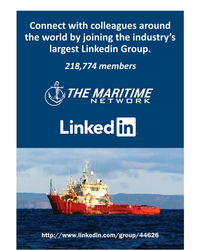 )
March 2024 - Marine Technology Reporter page: 21
)
March 2024 - Marine Technology Reporter page: 21Connect with colleagues around the world by joining the industry’s largest Linkedin Group. 218,774 members http://www.linkedin.com/group/44626 MTR #3 (18-33).indd 21 4/4/2024 3:37:21 PM
-
 )
April 2024 - Maritime Reporter and Engineering News page: 48
)
April 2024 - Maritime Reporter and Engineering News page: 48. . . . . . . . . . . . . . . . . . . . . . . . . . .www.wkdoors.com . . . . . . . . . . . . . . . . . . . . . . . . . . . . . . . . . . . . .(203) 267-5712 The listings above are an editorial service provided for the convenience of our readers. If you are an advertiser and would like to update or modify any
-
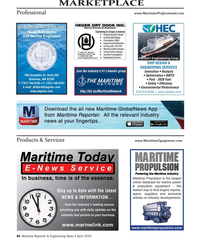 )
April 2024 - Maritime Reporter and Engineering News page: 46
)
April 2024 - Maritime Reporter and Engineering News page: 46MARKETPLACE Professional www.MaritimeProfessional.com GILBERT ASSOCIATES, INC.GILBERT ASSOCIATES, INC. Naval Architects and Marine Engineers SHIP DESIGN & ENGINEERING SERVICES Join the industry’s #1 Linkedin group )NNOVATION
-
 )
April 2024 - Maritime Reporter and Engineering News page: 43
)
April 2024 - Maritime Reporter and Engineering News page: 43“The industry is an ecosystem which includes owners, managers, mariners, shipyards, equipment makers, designers, research institutes and class societies: all of them are crucial,” – Eero Lehtovaara, Head of Regulatory & Public Affairs, ABB Marine & Ports All images courtesy ABB Marine and Ports provi
-
 )
April 2024 - Maritime Reporter and Engineering News page: 27
)
April 2024 - Maritime Reporter and Engineering News page: 27COVID, we had to make some hard choices for our Do your CIVMARs have upward mobility? mariners because we couldn’t rotate. Many of our mariners The Navy has Sailors who become “Mustangs,” and work found other employment, and were able to use their skills their way up to the of? cers’ ranks, and
-
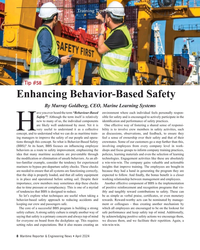 )
April 2024 - Maritime Reporter and Engineering News page: 8
)
April 2024 - Maritime Reporter and Engineering News page: 8Tips for Ships © By tuastockphoto/AdobeStock Tip #58 Enhancing Behavior-Based Safety By Murray Goldberg, CEO, Marine Learning Systems ave you ever heard the term “Behaviour-Based environment where each individual feels personally respon- Safety”? Although the term itself is relatively sible for safety
-
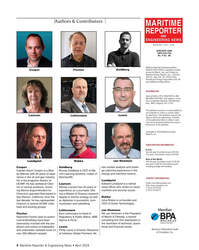 )
April 2024 - Maritime Reporter and Engineering News page: 4
)
April 2024 - Maritime Reporter and Engineering News page: 4Send all UAA to CFS. NON-POSTAL AND MILITARY FACILITIES send address correc- tions to Maritime Reporter, 850 Montauk Hwy., #867, Bayport, NY 11705. The publisher assumes no responsibility for any misprints or claims or actions taken by advertisers. The publisher reserves the Lehtovaara Laursen Lewis right
-
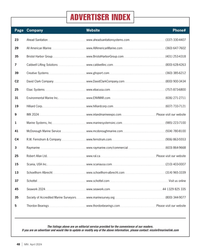 )
April 2024 - Marine News page: 48
)
April 2024 - Marine News page: 48825 335 35 Society of Accredited Marine Surveyors www.marinesurvey.org (800) 344-9077 5 Thordon Bearings www.thordonbearings.com Please visit our website The listings above are an editorial service provided for the convenience of our readers. If you are an advertiser and would like to update or modify any
-
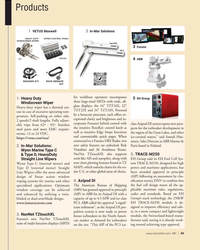 )
April 2024 - Marine News page: 43
)
April 2024 - Marine News page: 43ABB 4 for workboat operators encompasses EH Group 1. Heavy Duty 5 three large-sized MFDs with wide, all- Windscreen Wiper glass displays: the 16” TZT16X, 22” Heavy-duty wiper has a thermal cut- TZT22X and 24” TZT24X. Powered out in case of excessive operating tem- perature. Self-parking
-
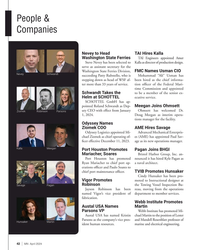 )
April 2024 - Marine News page: 42
)
April 2024 - Marine News page: 42State Ferries TAI Engineers appointed Amer Steve Nevey has been selected to Kalla as director of production design. serve as assistant secretary for the FMC Names Usman CIO Washington State Ferries Division, Nevey Schwandt succeeding Patty Rubstello, who is Mohammad “Ali” Usman has stepping down
-
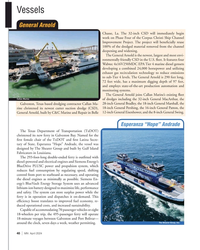 )
April 2024 - Marine News page: 40
)
April 2024 - Marine News page: 40Vessels General Arnold Chasse, La. The 32-inch CSD will immediately begin work on Phase Four of the Corpus Christi Ship Channel Improvement Project. The project will bene? cially reuse 100% of the dredged material removed from the channel deepening and widening. The General Arnold is the newest,
-
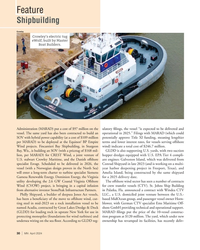 )
April 2024 - Marine News page: 30
)
April 2024 - Marine News page: 30Feature Shipbuilding Crowley Crowley’s electric tug eWolf, built by Master Boat Builders. Administration (MARAD) put a cost of $97 million on the ulatory ? lings, the vessel “is expected to be delivered and vessel. The same yard has also been contracted to build an operational in 2025.” Filings with
-
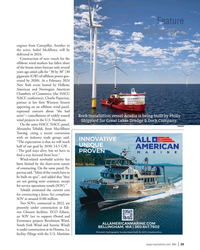 )
April 2024 - Marine News page: 29
)
April 2024 - Marine News page: 29engines from Caterpillar. Another in the series, Isabel McAllister, will be delivered in 2024. Construction of new vessels for the offshore wind markets has fallen short of the boom times forecast only several years ago amid calls for “30 by 30” (30 gigawatts (GW) of offshore power gen- erated by
-
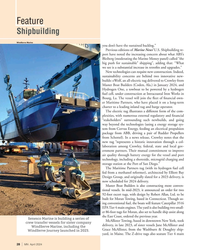 )
April 2024 - Marine News page: 28
)
April 2024 - Marine News page: 28Feature Shipbuilding WindServe Marine you don’t have the sustained backlog.” Previous editions of Marine News’ U.S. Shipbuilding re- port have noted the increasing concern about what ABS’s Bleiberg (moderating the Marine Money panel) called “the big push for sustainable” shipping”, adding that: “What we
-
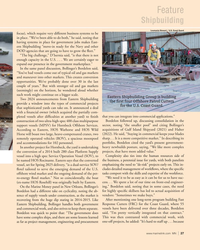 )
April 2024 - Marine News page: 27
)
April 2024 - Marine News page: 27in place. “We’ve been able to do both,” he said, noting that having systems in place for government jobs makes East- ern Shipbuilding “move-in ready for the Navy and other DOD agencies that are going to have to grow the ? eet.” “The big challenge,” D’Isernia said, “is that there is not enough capacity
-
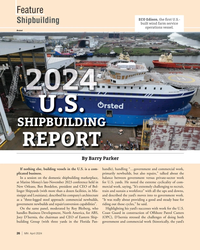 )
April 2024 - Marine News page: 26
)
April 2024 - Marine News page: 26Feature ECO Edison, the ? rst U.S.- Shipbuilding built wind farm service operations vessel. Ørsted U.S. SHIPBUILDING REPORT By Barry Parker If nothing else, building vessels in the U.S. is a com- handle), handling “…government and commercial work, plicated business. primarily newbuilds, but also
-
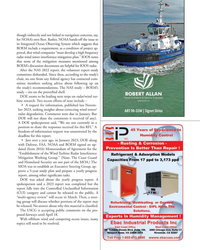 )
April 2024 - Marine News page: 25
)
April 2024 - Marine News page: 25though indirectly and not linked to navigation concerns, say, for NOAA’s own ? eet. Rather, NOAA hands-off the issue to its Integrated Ocean Observing System which suggests that BOEM include a requirement, as a condition of project ap- proval, that wind companies “must develop a high frequency radar
-
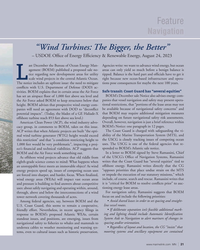 )
April 2024 - Marine News page: 21
)
April 2024 - Marine News page: 21Feature Navigation “Wind Turbines: The Bigger, the Better” – USDOE Of? ce of Energy Ef? ciency & Renewable Energy, August 24, 2023 ast December the Bureau of Ocean Energy Man- Agencies write: we want to advance wind energy, but ocean agement (BOEM) published a proposed sale no- areas can only yield so
-
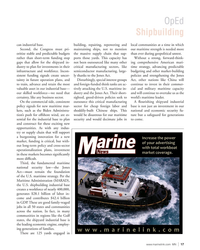 )
April 2024 - Marine News page: 17
)
April 2024 - Marine News page: 17OpEd Shipbuilding can industrial base. building, repairing, repowering and local communities at a time in which Second, the Congress must pri- maintaining ships, not to mention our maritime strength is needed more oritize stable and predictable budgets the massive supply chain that sup- than ever
-
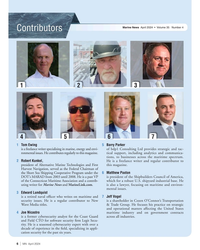 )
April 2024 - Marine News page: 6
)
April 2024 - Marine News page: 6and tac- ronmental issues. He contributes regularly to this magazine. tical support, including analytics and communica- tions, to businesses across the maritime spectrum. 2 Robert Kunkel, He is a freelance writer and regular contributor to president of Alternative Marine Technologies and First
-
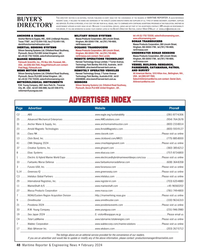 )
February 2024 - Maritime Reporter and Engineering News page: 48
)
February 2024 - Maritime Reporter and Engineering News page: 48. . . . . . . . . . . . . . . . . . . . . . . . . . .www.wkdoors.com . . . . . . . . . . . . . . . . . . . . . . . . . . . . . . . . . . . . .(203) 267-5712 The listings above are an editorial service provided for the convenience of our readers. If you are an advertiser and would like to update or modify any
